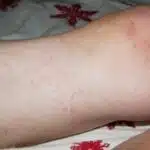As a laundry expert, I understand the frustration of getting slime on clothing. It can be a messy and stubborn stain to remove, but with the right techniques and products, it is possible to get slime out of clothing in just a few simple steps. In this article, I will share my knowledge and experience on how to effectively remove slime from different types of fabrics.
Slime is a popular children’s toy that can easily transfer onto clothing during playtime. The sticky substance is made from various materials such as glue, starch, and food coloring. While it may seem difficult to remove at first glance, there are specific methods that can effectively remove slime stains without damaging the fabric. By following these steps, you can ensure that your clothes remain clean and presentable even after coming into contact with this sticky toy. So if you’re ready to learn how to get slime out of clothing, keep reading!
Understanding The Nature Of Slime Stains
Slime stains can be quite a nuisance, especially when they end up on your favorite clothing. Understanding the chemistry of slime is essential in order to effectively remove the stain. Slime is a polymer made up of long chains of molecules that are cross-linked together. The adhesive nature of slime makes it difficult to remove from clothing, and if left untreated for too long, the stain may become permanent.
Common causes of slime stains include accidental spills while playing with slime or getting caught in an unexpected slime fight. The type of fabric also plays a role in how easily the stain can be removed. Synthetic fabrics, such as polyester or nylon, tend to hold onto the stain more firmly than natural fibers like cotton or wool. It’s important to act quickly and treat the stain as soon as possible to prevent it from setting into the fabric.
Assessing the type of fabric is crucial before attempting to remove a slime stain. Different fabrics require specific treatments, and using the wrong method could lead to further damage. It’s important to read the care label on your clothing before proceeding with any cleaning methods. In the next section, we will discuss how to assess the fabric and determine which cleaning method is best suited for removing slime stains.
Assessing The Type Of Fabric
Assessing Fabric Type is crucial when it comes to removing slime stains from clothing. Some fabrics are more delicate than others and require special care, while some are more robust and can withstand harsher cleaning methods. Before attempting to remove the stain, it is important to check the label on the garment for any special washing instructions.
Slime Consistency Differences also play a significant role in assessing fabric type. For instance, if the slime is thick and gooey, it may have seeped into the fibers of the fabric and require a different approach compared to a thinner slime consistency. Additionally, some slimes contain harsh chemicals that can damage certain types of fabrics; hence it’s essential to identify these differences before proceeding with cleaning.
Assessing Fabric Type and Slime Consistency Differences is crucial in determining the best approach when dealing with slime stains on clothing. Understanding these variations will help you choose an appropriate cleaning method that won’t cause further damage to your clothes. In the next section, we will discuss how to pre-treat stains before washing them in detail.
Pre-Treating The Stain
After assessing the type of fabric, the next step is to pre-treat the slime stain. This is an important step in ensuring that the stain is effectively removed without damaging the fabric. There are various types of slime, including homemade and store-bought varieties, each with its own set of challenges when it comes to removal. It’s important to identify the type of slime before attempting any pre-treatment.
Common pre-treatments for slime stains include using vinegar, rubbing alcohol and dish soap. Vinegar is effective for removing homemade slime and can be applied directly to the stain using a cloth or sponge. Rubbing alcohol works well on store-bought slime and can be poured onto a cloth or cotton ball before dabbing onto the stain. Dish soap is also effective for removing most types of slime stains and should be applied directly to the affected area before being gently rubbed in.
To ensure that you effectively remove all traces of slime from your clothing, it’s important to follow a few simple steps. Firstly, always remove excess slime from your clothing before applying any pre-treatment. Secondly, avoid rubbing or scrubbing the stain too vigorously as this can damage delicate fabrics. Finally, always rinse out any pre-treatment thoroughly with cold water before washing your clothing as normal.
Moving onto removing excess slime from clothing, it’s important to do this carefully so as not to spread the stain further or damage the fabric. There are several methods for removing excess slime including using a blunt knife or spoon to gently scrape away any excess material from the surface of the fabric. Another method involves using tape or sticky rollers to lift away any remaining residue from the fabric. By following these simple steps, you can effectively remove even stubborn slime stains from your clothing without causing any damage or discoloration.
Removing Excess Slime
After determining the type of slime and its consistency, it is crucial to remove as much excess slime from the clothing as possible. Using a blunt knife or spoon, gently scrape off any visible slime on the surface of the fabric. Be careful not to push the slime further into the fibers, which can lead to more difficult stains.
Once excess slime has been removed, it is important to consider how the slime was stored before use. If stored in a warm environment or for an extended period, it may have become stickier and harder to remove from clothing. In this case, placing the clothing in a freezer for a few hours can help harden the remaining slime, making it easier to scrape off.
To summarize these steps visually:
| Step | Action |
|---|---|
| 1 | Gently scrape excess slime with a blunt knife or spoon |
| 2 | Consider storage conditions of slime |
| 3 | Freeze clothing to harden remaining slime for easier removal |
With excess slime removed and consideration given to storage conditions, the next step is soaking the fabric in an appropriate solution to fully remove any remaining residue.
Soaking The Fabric
Did you know that soaking the fabric is one of the most effective ways to remove slime from clothing? In fact, a study conducted by the American Cleaning Institute found that soaking stains in water before washing them can increase the likelihood of complete stain removal by up to 80%. Soaking helps to loosen dirt and stains from the fibers of the fabric, making it easier for them to be removed during washing.
One of the benefits of soaking is that it allows you to treat multiple stains at once. Instead of trying to tackle each stain individually, you can soak all of your stained items together in a bucket or sink. This saves time and energy while also providing better results. The duration for soaking depends on the severity of the stain, but typically ranges from 30 minutes to several hours. You should check on your clothes periodically during this time and replace the water if it becomes discolored or dirty.
To ensure that your clothes are properly cleaned, it’s important to use hot water when washing them after soaking. Hot water helps to break down any remaining slime particles and removes any residual detergent or cleaning solution left over from soaking. Additionally, hot water can help kill any bacteria or germs that may have accumulated on your clothing as a result of being stained with slime. By following these simple steps, you can effectively remove slime from your clothing without damaging or ruining them in the process.
Using Hot Water
Benefits of Hot Water
Hot water is a powerful tool for removing stubborn slime stains from clothing. The heat from the water helps to dissolve the slime and loosen its grip on the fabric fibers, making it easier to wash away. Additionally, hot water can also help to sanitize and disinfect clothing, killing any bacteria or germs that may be present.
Safety Precautions When Using Hot Water
While hot water can be highly effective for stain removal, it is important to take proper safety precautions when using it. Always check the care label on your clothing to ensure that it can withstand high temperatures before washing with hot water. Additionally, use caution when handling hot water and avoid coming into direct contact with it to prevent burns or scalds.
When using hot water for stain removal purposes, be sure to follow these safety tips:
- Use gloves or other protective gear to avoid skin contact with hot water
- Avoid splashing or spilling hot water
- Keep children and pets away from the area where you are working
- Do not leave hot water unattended
By taking these precautions, you can safely harness the power of hot water for effective slime stain removal without putting yourself or others at risk.
Transition: Now that you understand the benefits and safety precautions of using hot water for removing slime stains from clothing, let’s explore another key step in this process – applying dish soap.
Applying Dish Soap
Continuing from the previous section, using hot water is a great way to get rid of slime from clothing. However, it may not always be enough. In such cases, applying dish soap can come in handy. Dish soap is known for its grease-cutting properties and can break down the stickiness of slime quite effectively.
To begin with, apply a small amount of dish soap on the affected area and rub it gently using a soft-bristled brush or your fingers. Make sure to cover the entire surface area that has been stained by the slime. Once you have rubbed it in thoroughly, allow it to sit for about 10 minutes before washing it off with warm water.
Alternative methods such as vinegar or baking soda may also work, but they come with potential risks such as damaging certain types of fabrics or causing discoloration. Dish soap is a safer option that works well on most types of fabric without causing any harm. Remember to always test an inconspicuous area first to ensure that there are no adverse effects before treating the entire garment.
Rubbing alcohol to the rescue! While dish soap can effectively remove slime from most fabrics, some surfaces like carpets or upholstery may require extra effort. In such cases, rubbing alcohol can be used as an alternative solution. But how exactly does rubbing alcohol help? Find out in the next section!
Rubbing Alcohol To The Rescue
Rubbing alcohol is a versatile household item that can be used for many cleaning purposes, including removing slime from clothing. It is a mild solvent that effectively dissolves the sticky residue left by slime without damaging the fabric. With its high evaporation rate, it dries faster than water-based solutions, making it an ideal choice for quick stain removal.
To use rubbing alcohol on slime-stained clothing, follow these steps:
- Dab the affected area with a cloth or paper towel to remove any excess slime.
- Pour some rubbing alcohol onto the stain and let it sit for 5-10 minutes.
- Gently rub the area with a soft-bristled brush or toothbrush to loosen the remaining slime.
- Rinse the garment in cold water and repeat if necessary until the stain disappears.
Alternative solutions to using rubbing alcohol include vinegar or dish soap mixed with warm water. However, these options may not be as effective as rubbing alcohol and could potentially damage delicate fabrics or cause color fading. It is best to test these alternatives on an inconspicuous area of the garment before applying them to the stain.
Before attempting to remove stains from clothing, it is essential to know what type of fabric you are dealing with and whether there are any potential risks involved in using certain cleaning methods. Always read labels and follow manufacturer’s instructions to avoid any damage or discoloration of your clothes.
Next up: Using White Vinegar
Using White Vinegar
White vinegar is an excellent cleaning agent that can be used for several purposes, including laundry. One of the benefits of using white vinegar for cleaning is that it’s a natural and affordable alternative to harsh chemicals. It’s also readily available in most households, making it an accessible option for removing slime from clothing.
When using white vinegar to remove slime from clothing, start by soaking the affected area in a mixture of water and white vinegar. The acidic properties of white vinegar help break down the slime and loosen its grip on the fabric. Once soaked, use a soft-bristled brush to gently scrub away any remaining residue before washing the garment as usual.
Aside from its use in laundry, white vinegar has several other alternative uses in household cleaning. It can be used as a natural disinfectant for surfaces such as kitchen counters and bathroom tiles. White vinegar also helps eliminate odors when added to laundry or used as a rinse aid in your dishwasher.
Having trouble getting slime out of clothing? Try using white vinegar as a natural solution that won’t break the bank. In the next section, we’ll explore another effective method for removing slime using baking soda and hydrogen peroxide.
Baking Soda And Hydrogen Peroxide
After using white vinegar to remove DIY slime from clothing, another effective method is to use a combination of baking soda and hydrogen peroxide. Baking soda is a natural abrasive that can help break down the slime particles, while hydrogen peroxide acts as a powerful stain remover.
To begin, mix equal parts baking soda and hydrogen peroxide in a bowl to create a paste. Apply the paste directly onto the stained area and gently rub it in with a soft-bristled brush or cloth. Allow the mixture to sit on the stain for at least 10 minutes before rinsing it off with warm water.
It’s important to note that this method should only be used on color-safe fabrics, as hydrogen peroxide can potentially bleach or discolor certain materials. If you’re unsure about your fabric’s colorfastness, test the mixture on an inconspicuous area first before applying it to the stain. With these simple steps, your clothes will be free of any unwanted slime ingredients without having to resort to harsh bleach-based products.
Bleach-Free Stain Removers
Ironically, accidents happen when we least expect them, and slime stains on our clothes can be a pain to remove. However, there is no reason to worry as there are bleach-free stain removers that can help you get rid of those pesky stains. Here are three DIY stain removers that are easy to make and use:
Vinegar and Baking Soda Solution: Mix equal parts of vinegar and baking soda to form a paste. Apply the mixture directly onto the stained area and let it sit for about 30 minutes before washing the garment.
Lemon Juice and Salt Solution: Mix lemon juice with salt until you have a thick paste. Apply it to the stained area, leave it for ten minutes, then wash your garment as usual.
Hydrogen Peroxide Solution: Mix hydrogen peroxide with water in a 1:1 ratio. Apply the solution onto the stained area, let it sit for about 30 minutes before washing your garment.
These natural cleaning solutions are not only effective but also safer than chemical-based products that can harm both your garments and skin. As a laundry expert, I highly recommend these remedies for removing slime stains from clothing.
If you want to avoid using heat during the cleaning process, consider air-drying your garments instead of using a dryer. Heat can cause stains to set deeper into the fabric, making them harder to remove later on. By following these tips and using DIY stain removers, you can easily get rid of slime stains without damaging your clothes or relying on harsh chemicals.
Avoiding Heat
Transitioning from bleach-free stain removers, it is important to consider preventing damage and alternative methods for removing slime from clothing. While some may be tempted to use heat or harsh chemicals, these options can cause further harm to the fabric and potentially lead to irreversible damage.
One alternative method for removing slime from clothing is using vinegar. Vinegar is a natural cleaning agent that can break down the slime without causing damage to the fabric. To use this method, mix equal parts of white vinegar and water and apply it directly onto the affected area. Allow it to sit for 10-15 minutes before rinsing with cold water and washing as usual.
Another alternative method is using rubbing alcohol. Rubbing alcohol is effective in dissolving the slime, making it easier to remove from the fabric. Simply dab a small amount of rubbing alcohol onto a clean cloth and gently rub the affected area until the slime lifts off. Rinse with cold water before washing as usual.
Table:
| Method | Materials Needed | How-to |
|---|---|---|
| Vinegar | White vinegar, Water | Mix equal parts of white vinegar and water and apply directly onto affected area. Allow it to sit for 10-15 minutes before rinsing with cold water and washing as usual. |
| Rubbing Alcohol | Rubbing alcohol, Clean cloth | Dab a small amount of rubbing alcohol onto a clean cloth and gently rub affected area until slime lifts off. Rinse with cold water before washing as usual. |
To ensure that no damage occurs during the process of removing slime from clothing, it is important to carefully follow instructions for each method used while also considering alternative solutions like those mentioned above. With these methods, one can effectively remove slime without compromising the quality of their clothes.
Transitioning into drying the fabric after removing slime, it is crucial to take care in this step as well in order to avoid any potential damage or shrinkage.
Drying The Fabric
After successfully removing slime from clothing, the next step is drying the fabric. The two primary methods of drying are air drying and machine drying. Air drying is the most recommended method as it prevents shrinkage and damage to delicate fabrics. After wringing out any excess water, lay the garment flat on a clean towel or hang it to dry in a well-ventilated area away from direct sunlight.
When considering whether to use fabric softener during the drying process, it’s important to note that some brands can leave a residue on clothing that may attract dirt and cause discoloration. If using fabric softener, opt for a hypoallergenic brand without added dyes or fragrances. Alternatively, consider using wool dryer balls or vinegar as natural alternatives that soften clothes without leaving residue.
To ensure the garment is fully dry before wearing or storing, check for dampness in hidden areas such as under collars or inside cuffs. It’s also essential to verify that all traces of slime have been removed before proceeding with the next step of wearing or storing clothing. By following these steps and taking proper care during the drying process, you can prevent damage to your clothes and ensure they are ready for future use.
Checking For Residual Stains
After drying the fabric, it’s important to check for any residual stains left by the slime. Slime is one of the most common stains that people encounter, and it can be challenging to remove. However, with a few DIY solutions and professional cleaning options, you can get rid of those pesky slime stains easily.
For those who prefer to tackle the stain removal process themselves, there are several DIY solutions that can be used. One effective method is to mix equal parts white vinegar and water and apply it directly onto the stain. Allow it to sit for 10-15 minutes before washing the garment as usual. Another option is to use rubbing alcohol or hydrogen peroxide on the affected area before washing.
If DIY solutions aren’t cutting it, consider professional cleaning services for more cost-effective options. Most dry cleaners offer specialized treatments for removing tough stains such as slime. Although this option may come at an additional cost, it’s often worth it in terms of time and effort saved.
In addition to these methods, there are additional tips and tricks for slime stain removal that can be helpful. For instance, avoid using hot water when washing a stained garment as this can set the stain further into the fabric. It’s also essential to treat the stain as soon as possible before it has a chance to set in. By following these guidelines and utilizing different methods depending on your preference and budget, you can say goodbye to slime stains once and for all!
Additional Tips And Tricks For Slime Stain Removal
As a laundry expert, I understand the frustration of dealing with slime stains on clothing. Fortunately, there are additional tips and tricks that you can use to remove these stubborn marks.
One effective method is to use vinegar and water to break down the slime. Simply mix equal parts white vinegar and water and apply it to the stain. Let it sit for 10-15 minutes before washing as usual. This will help dissolve the slime and make it easier to remove.
Another tip is to prevent slime stains altogether by taking precautions when making DIY slime recipes. Use a protective surface, such as a plastic tablecloth or parchment paper, when making slime to avoid spills on clothing or furniture. Additionally, encourage children to play with slime over a designated area away from carpets or upholstery.
By following these additional tips and tricks, you can successfully remove slime stains from clothing and prevent them from happening in the first place. With a little extra care and attention, you can keep your clothes looking clean and fresh no matter what messy situations come your way.
Conclusion
Slime stains can be tricky to remove from clothing, but with the right techniques and a bit of patience, you can successfully get rid of them. Understanding the nature of slime stains is crucial as it will help you determine the best approach to take when removing them. Assessing the type of fabric is also important as some materials are more delicate than others and require special attention.
Pre-treating the stain by removing excess slime and soaking the fabric in water and detergent can help break down the stain. Avoiding heat during the cleaning process is essential as it can cause the stain to set in permanently. Once the fabric has been cleaned, it should be checked for any residual stains before drying.
According to a survey conducted by OnePoll, 44% of parents say that their children have accidentally spilled slime on their clothing or furniture. This statistic highlights how common slime stains are among households with kids and emphasizes why knowing how to remove them effectively is essential. As a laundry expert, it’s important to stay up-to-date with new techniques and products that can aid in removing tough stains like slime. By following these steps, you’ll be able to tackle any slime stain with ease and keep your clothes looking fresh and clean.
Image Credits
- “Minnie Vs. Green Slime” by iSlime (featured)





























